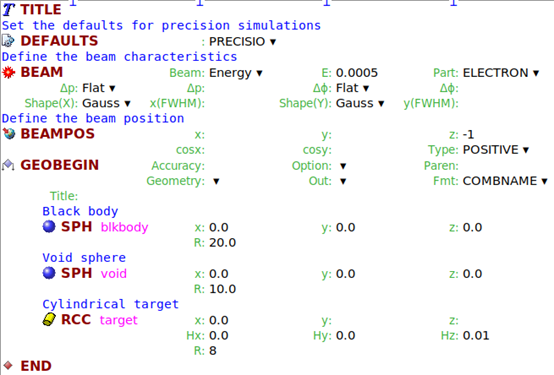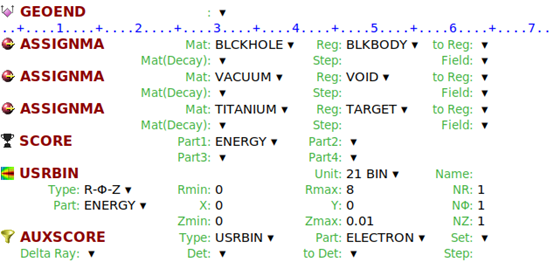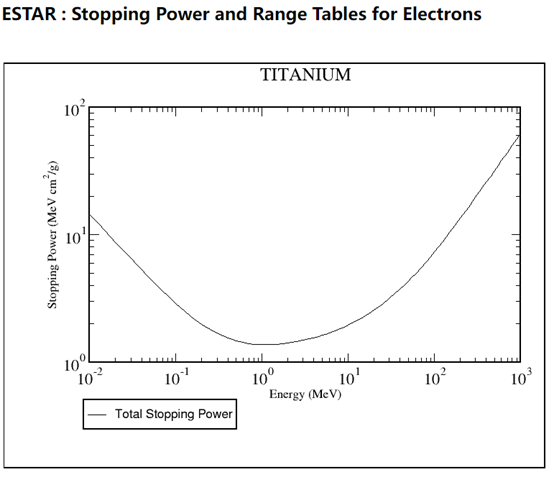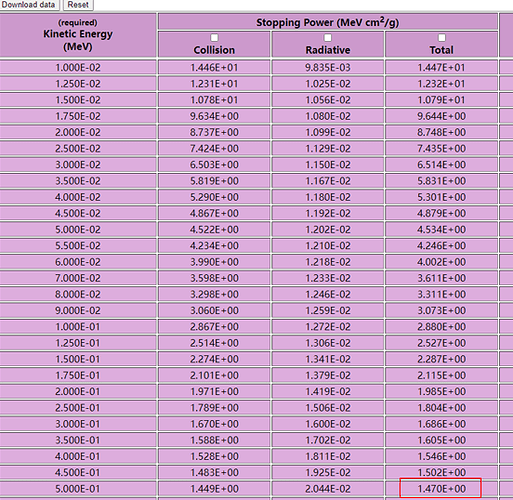Dear experts, I simulate energy deposition of electron beam shooting a thin Ti window. The energy deposition is used for the temperature calculation of Ti to confirm that the material is safe. The energy of the electron is 0.5MeV,and the thickness of the Ti is 0.1mm and the radius of 8cm. I use three different methods to make it, including the FLUKA with score/usrbin, the stopping power and MCNP with *F8 card. But the results of the FLUKA is almost twice of the result of the stopping power and MCNP with *F8 card.
The model is quite simple but I the deviation of the results confused me a lot. Here are the details of the calculation.
- FLUKA: The energy deposition in the Ti window from score card is 0.12875MeV/primary, and is 0.1277MeV/primary from usrbin card (the original results of 6.3520E-05GeV multiply by the volume of the Ti window, which is 3.1415988*0.01cm3). I also calculate the contribution of electron with the AUXSCORE card and the result is 0.1277MeV/primary, which shows that contribution from the electron is dominated and the contribution from photon could be negligible.


-
The stopping power is from the NIST ESTAR database(https://physics.nist.gov/PhysRefData/Star/Text/ESTAR.html), as follows.
The stopping power for Ti is 1.470MeV/cm2/g for 0.5MeV. since the density is 4.54g/cm3, then the stopping power is 6.67MeV/cm and the total energy loss in the Ti window is 0.0667MeV.

-
MCNP: The model is exported from FLUKA to MCNP. And the information of sdef is added.
The calculation is used by the *F8 card and the energy deposition is 0.0586MeV.

Could any expert help to explain the difference of the results, especially that the results of the FLUKA is almost twice of the result of the stopping power and MCNP with *F8 card.
Thank you.
mcnp.inp (896 Bytes)
mcnp.out (15.7 KB)
DC gun.flair (1.5 KB)
DC gun.inp (1.2 KB)
